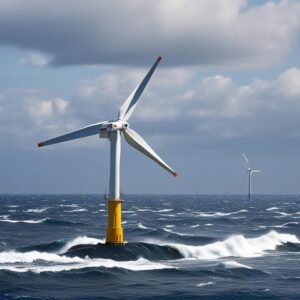The global pivot towards renewable energy is swiftly becoming paramount as humanity faces the dual challenges of climate change and the dwindling reserves of fossil fuels. This critical transition is being propelled by cutting-edge technologies and visionary policies that are orchestrating significant advancements in the sustainable energy sector. Among these, solar and wind energy stand out as particularly promising solutions due to their remarkable technological advancements.
Solar energy has benefited enormously from technological innovations such as photovoltaic (PV) cells and concentrated solar power (CSP) systems. These advancements have resulted in increased efficiency and cost reductions, making solar power a viable alternative to traditional energy sources. Concurrently, the wind energy sector has experienced transformative progress with the development of larger, more efficient turbines and the expansion of offshore wind farms. These offshore installations exploit stronger and more consistent wind patterns, greatly enhancing the reliability and output of wind-generated electricity.
The landscape of renewable energy is enriched by other vital technologies as well. Hydropower, an enduring pillar of renewable energy, is evolving with the introduction of small-scale projects and run-of-the-river systems that minimize ecological disruptions. Geothermal energy is gaining momentum by harnessing the Earth’s internal heat, offering a steady base-load power source. In addition, the bioenergy sector is innovating by generating biofuels from agricultural residues and algae, thus presenting alternative solutions for harder-to-decarbonize sectors like transportation.
A pivotal aspect of integrating renewable energy into mainstream use is addressing the intermittency inherent in solar and wind power. Significant strides are being made in energy storage technologies, particularly with lithium-ion and the nascent solid-state batteries, which promise greater capacity and durability. Moreover, large-scale storage initiatives and the development of smart grids are revolutionizing how we manage and distribute renewable energy, bolstering both its reliability and accessibility.
The acceleration of renewable energy adoption hinges significantly on supportive government policies. Across the globe, nations are enacting measures such as subsidies, tax incentives, and renewable portfolio standards to incentivize investments in green technologies. Carbon pricing strategies, including carbon taxes and cap-and-trade systems, serve to discourage fossil fuel use and render renewable energy more economically attractive. International frameworks like the Paris Agreement foster worldwide cooperation aimed at curtailing greenhouse gas emissions while promoting the development of renewable resources.
Collaboration between the public and private sectors is crucial for driving innovation and widespread deployment of renewable energy solutions. Joint ventures involving governments, research entities, and private enterprises are spearheading breakthroughs in technology while facilitating the scalability of renewable projects. Grassroots initiatives and decentralized energy systems, like microgrids, enable local communities to actively engage with and benefit from the renewable energy transition.
The journey towards a renewable energy future is not devoid of challenges; it requires substantial investments, significant upgrades in infrastructure, and navigation through complex regulatory landscapes. However, the convergence of technological innovation and favorable policies offers a promising pathway. As renewable energy technologies continue to advance, they hold immense potential in mitigating climate change, strengthening energy security, and spurring economic growth.
In essence, while hurdles remain on the path to an entirely sustainable energy ecosystem, ongoing progress fueled by robust policy frameworks and technological innovation paves a promising way forward. Renewable energy’s trajectory points towards a pivotal role in fostering an environmentally stable, economically robust future.

